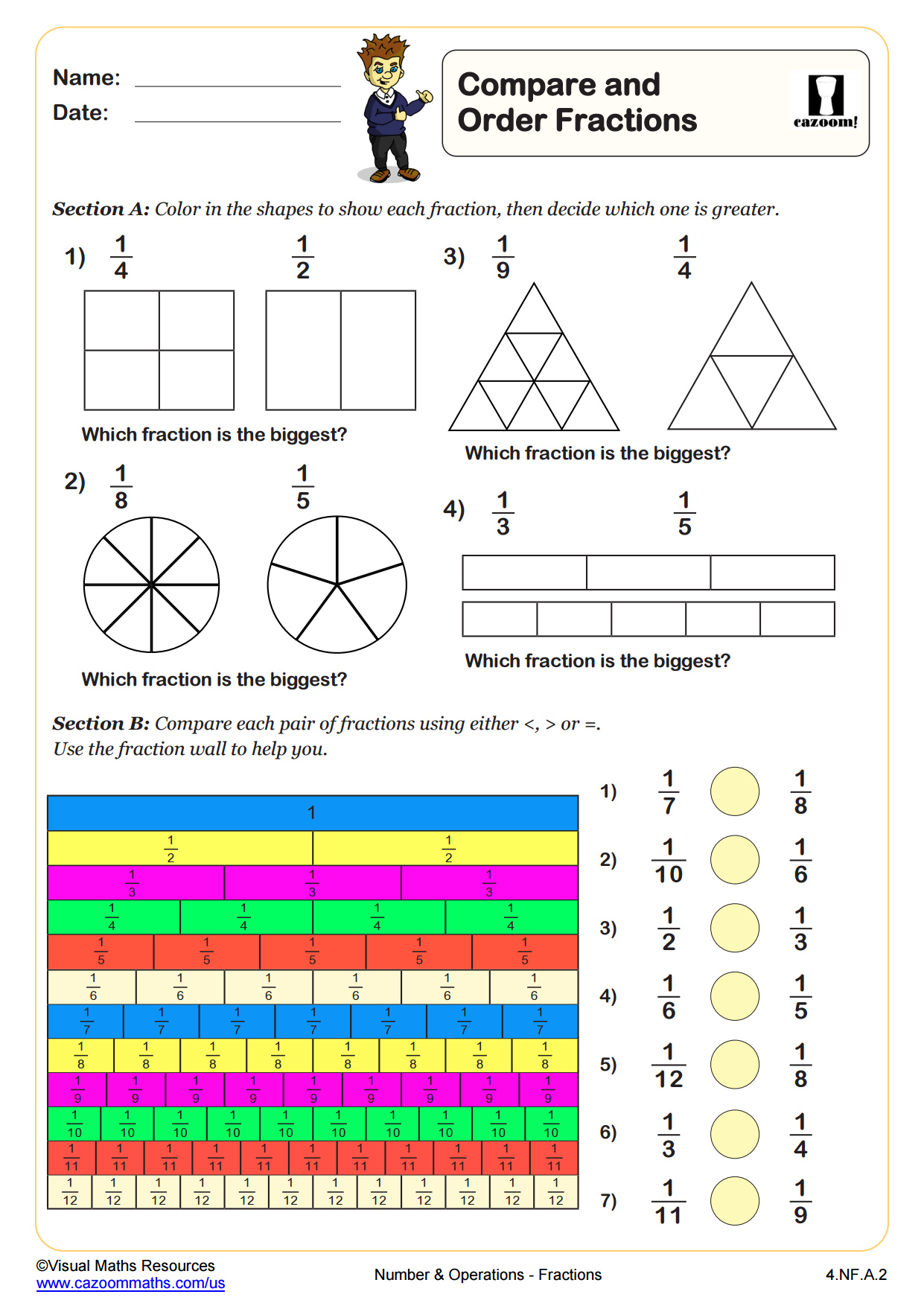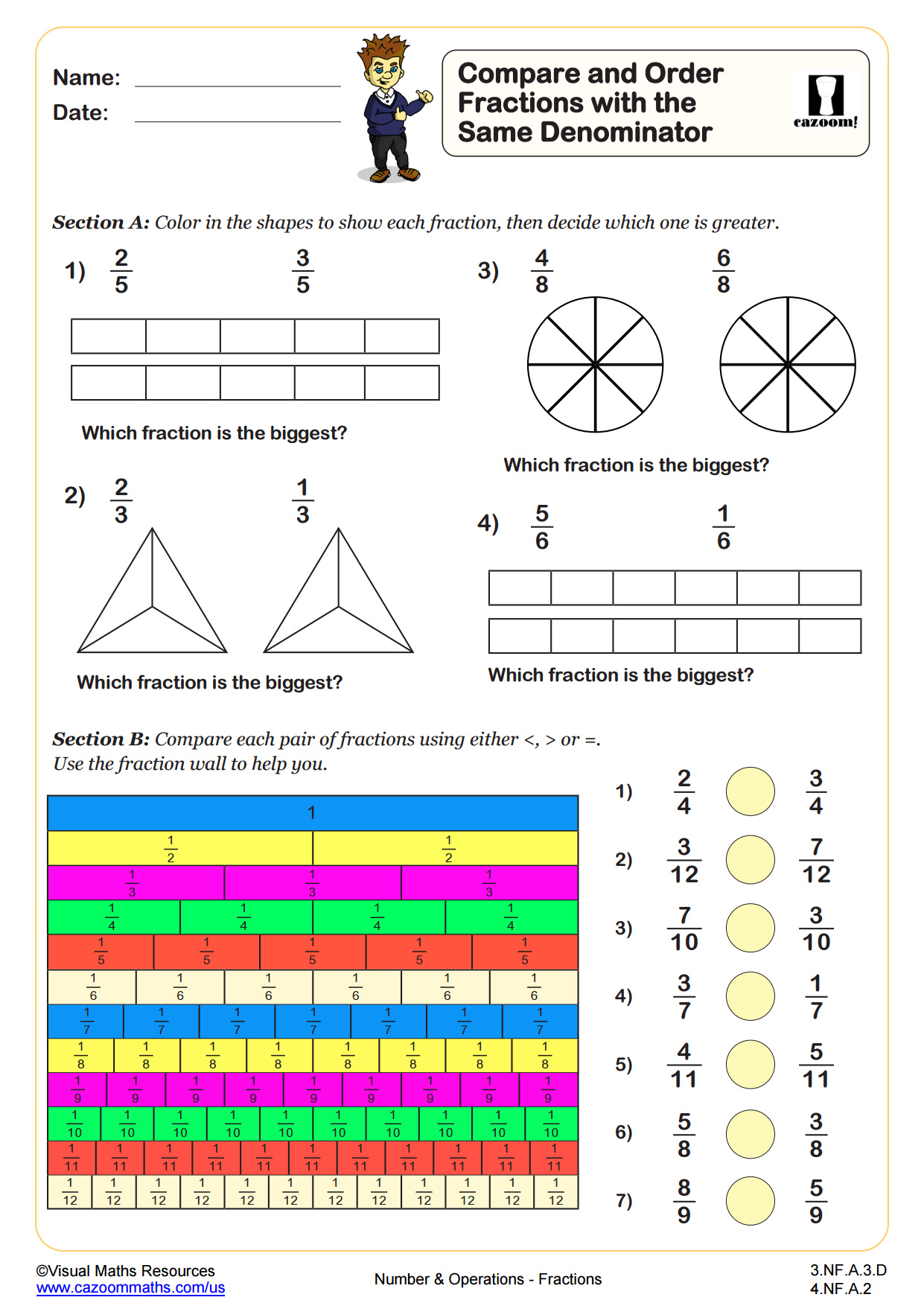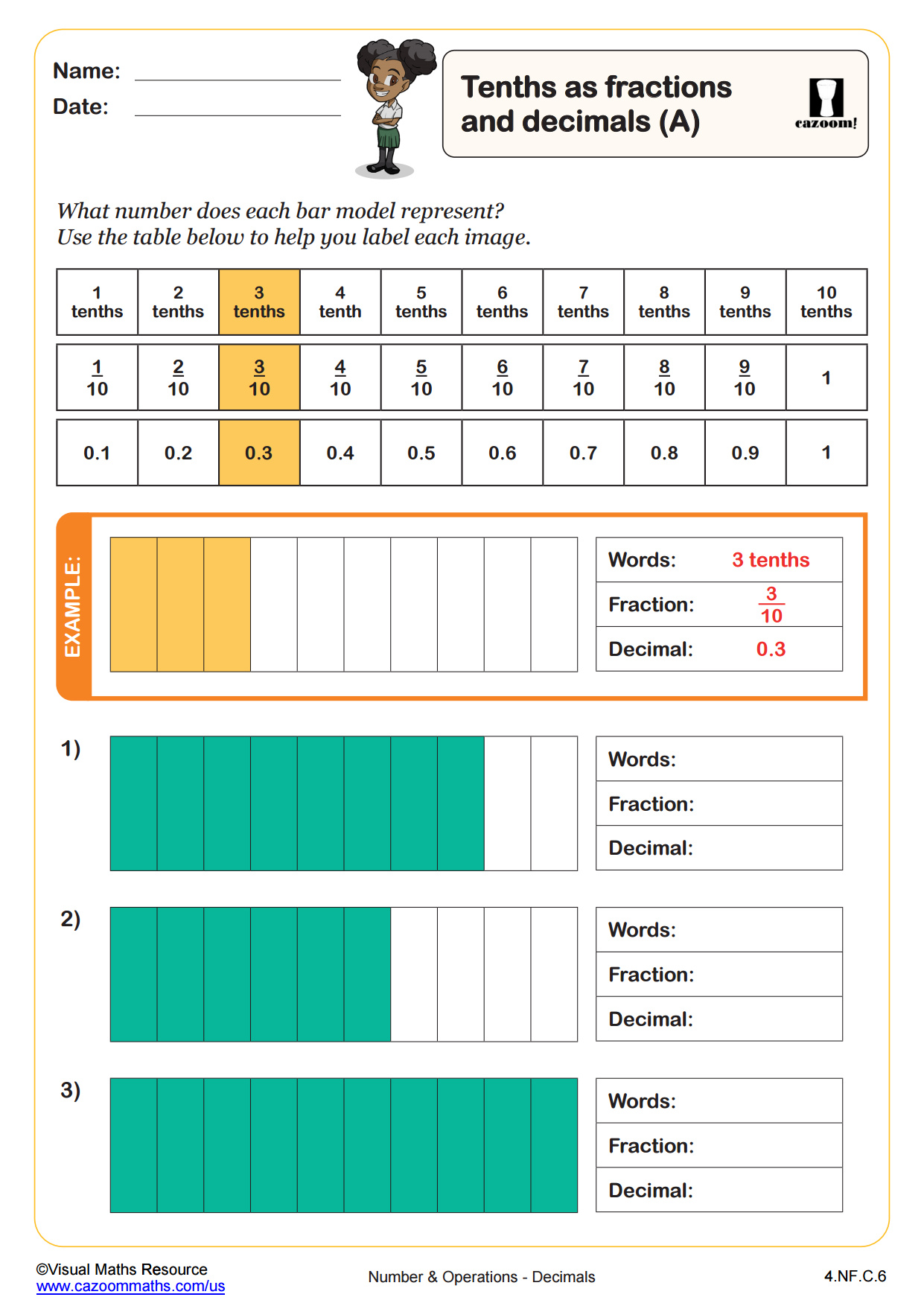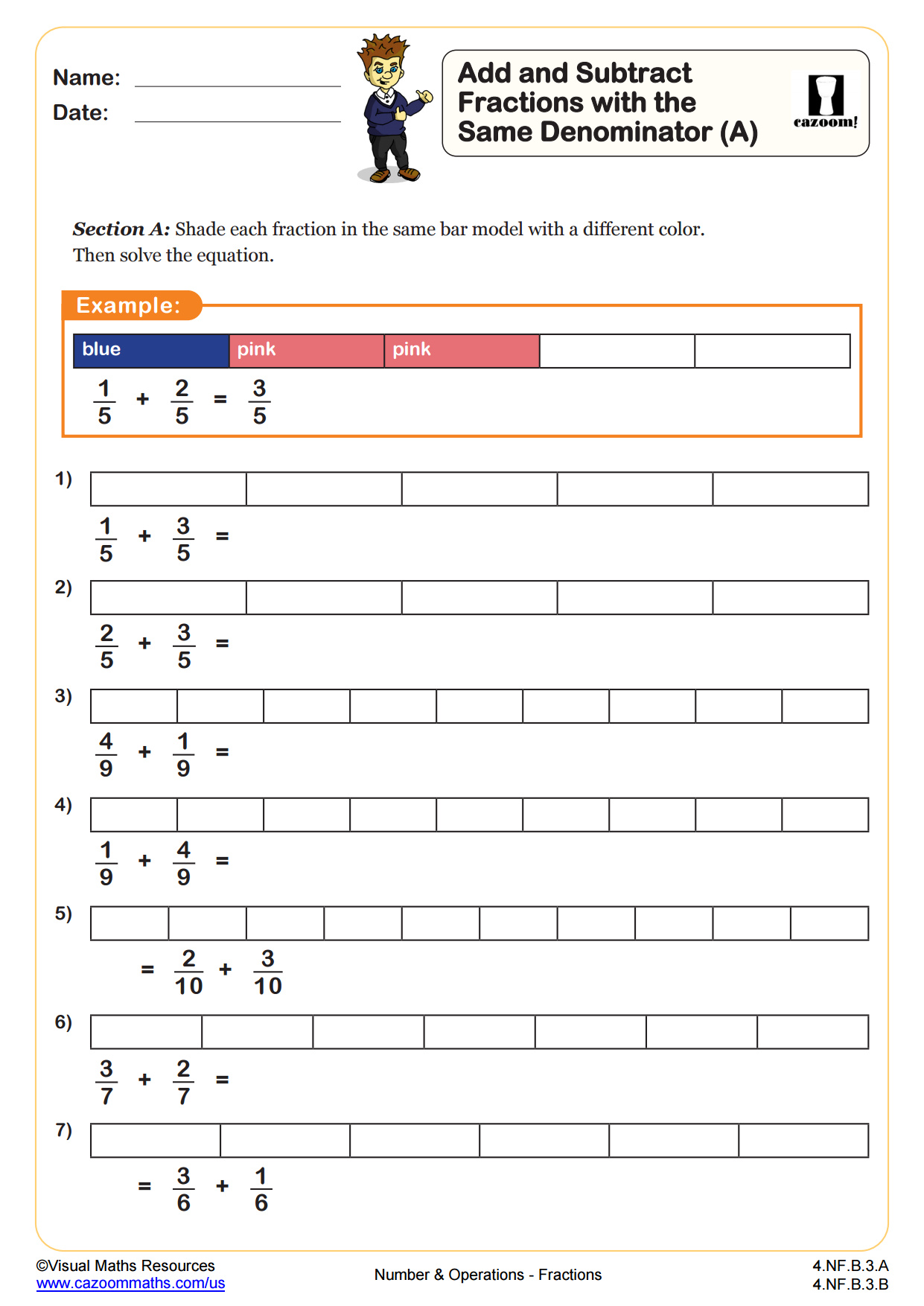Back to:
Counting in Tenths (A) WORKSHEET
Suitable for Grades: 3rd Grade
CCSS: 3.NF.A.3, 3.NF.A.3.D
CCSS Description: Explain equivalence of fractions in special cases, and compare fractions by reasoning about their size. a. Understand two fractions as equivalent (equal) if they are the same size, or the same point on a number line. b. Recognize and generate simple equivalent fractions, e.g., 1/2 = 2/4, 4/6 = 2/3). Explain why the fractions are equivalent, e.g., by using a visual fraction model. c. Express whole numbers as fractions, and recognize fractions that are equivalent to whole numbers. Examples: Express 3 in the form 3 = 3/1; recognize that 6/1 = 6; locate 4/4 and 1 at the same point of a number line diagram. d. Compare two fractions with the same numerator or the same denominator by reasoning about their size. Recognize that comparisons are valid only when the two fractions refer to the same whole. Record the results of comparisons with the symbols >, =, or <, and justify the conclusions, e.g., by using a visual fraction model.
Compare two fractions with the same numerator or the same denominator by reasoning about their size. Recognize that comparisons are valid only when the two fractions refer to the same whole. Record the results of comparisons with the symbols >, =, or <, and justify the conclusions, e.g., by using a visual fraction model.
Compare two fractions with the same numerator or the same denominator by reasoning about their size. Recognize that comparisons are valid only when the two fractions refer to the same whole. Record the results of comparisons with the symbols >, =, or <, and justify the conclusions, e.g., by using a visual fraction model.
Counting in Tenths (A) WORKSHEET DESCRIPTION
students will order tenths once they cut out ten-frames, bar models and tenths cards. Learners will match each ten frame to the fraction that shows the number of red counters, color in a bar model to represent each fraction and ten frame pair before placing the sets in ascending order.
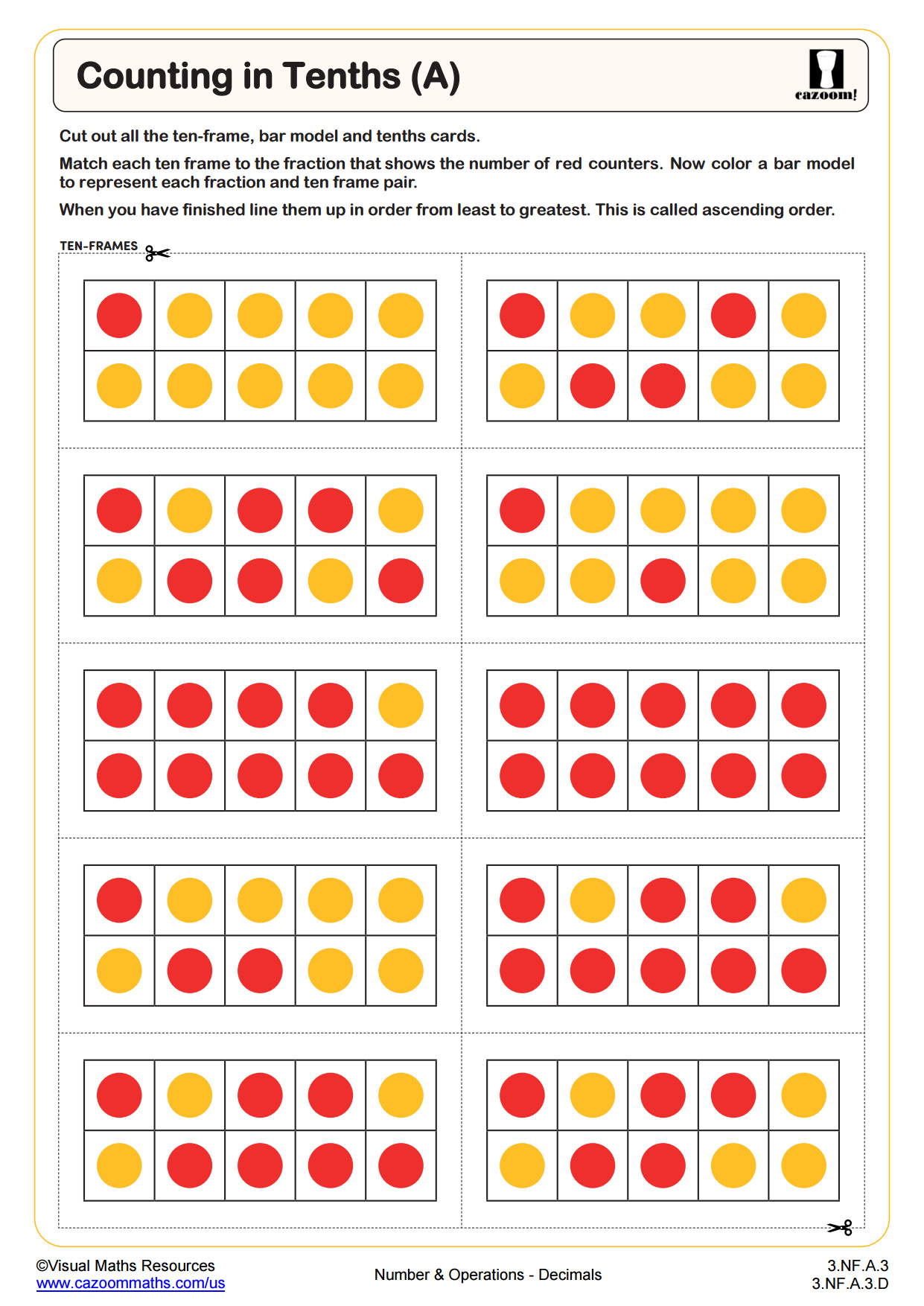
RELATED TO Counting in Tenths (A) WORKSHEET
Frequently Asked Questions
This counting in tenths (a) worksheet is designed for students in 3rd Grade and aligns with Common Core State Standards.
